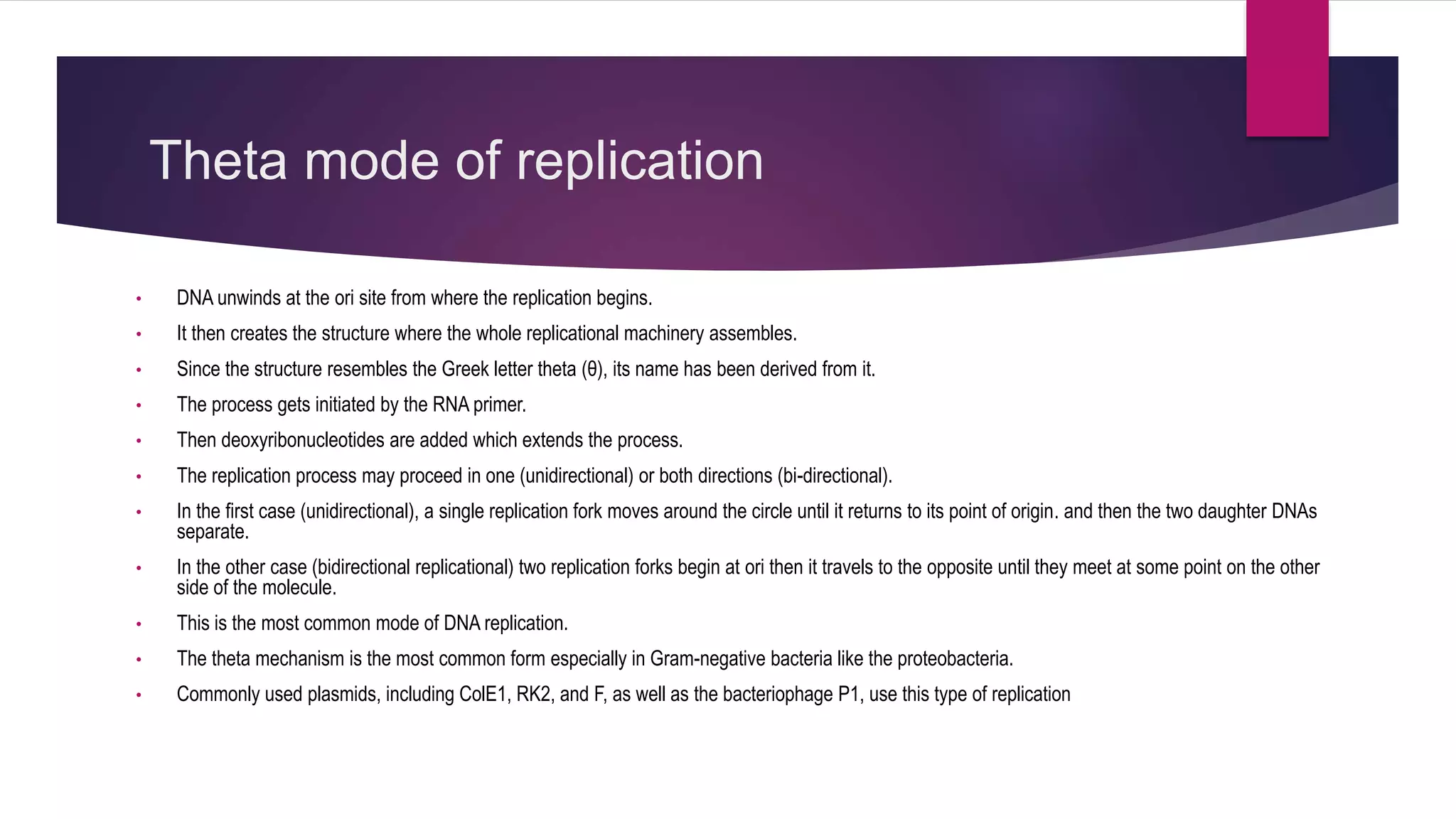DNA replication uses a semi-conservative method that results in two double-stranded DNA molecules, each with one old parental strand and one new daughter strand. Replication occurs through the theta and rolling circle mechanisms in prokaryotes. The theta mechanism involves unwinding DNA at the origin of replication and creating replication forks that allow bidirectional synthesis of new strands. The rolling circle mechanism involves nicking one strand at the origin, allowing it to be replicated unidirectionally as it "rolls" off the parental strand.

















